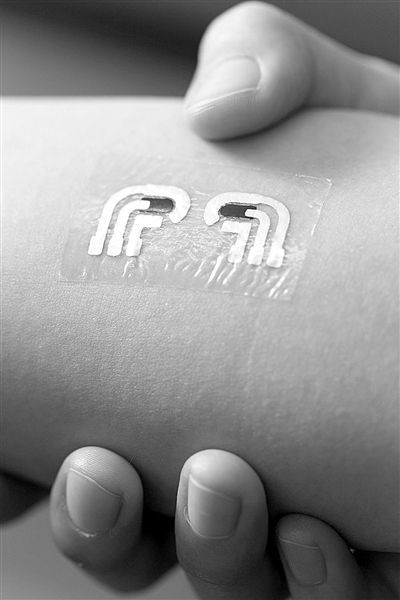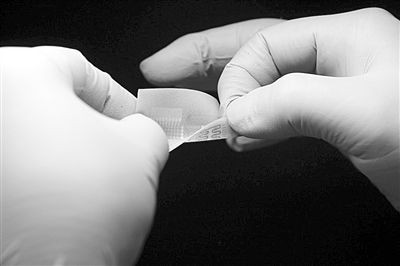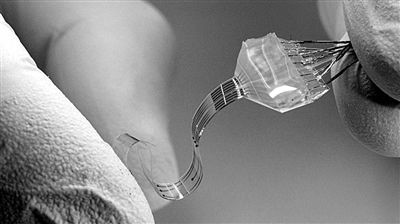With the advancement of technology, electronic products, especially wearable devices, are becoming smaller and softer. This trend has also extended to the field of medical equipment. Scientists are developing new, smaller, softer, and more intelligent medical devices. Due to their excellent integration with the human body, these soft and elastic devices will not look any different from the outside after implantation or use. From cool smart tattoos to long-term implantation devices that can help paralyzed patients stand up again, these fascinating technologies may soon be applied.
What are the applications of wearable devices in the medical field
Nowadays, wearable devices can track users' daily activities, calorie intake, and burning status through smartphone applications, or monitor health information such as heart rate and body temperature based on activity data.
1. To prevent diseases before they occur
In order to treat potential illnesses as soon as possible, wearable health medical equipment can be worn on a daily basis to help identify the cause of the disease in the early stages. For example, cardiovascular diseases
2. Chronic disease management
Targeted wearable healthcare devices can be utilized to assist in tracking and managing medical conditions. For example, for chronic diseases, such as diabetes, patients need to carry out diet control and blood sugar monitoring; For diseases with a high probability of recurrence, such as heart disease, patients need to monitor heart rate changes in a timely manner to avoid sudden changes in the condition.
3. Only for alleviating and improving effects
For some intelligent devices in the medical field, they cannot cure a certain disease, such as snoring. It can only be alleviated.
What are the benefits of using Bluetooth technology on wearable medical devices?
At present, wearable medical devices are usually small items, such as heart rate meters, blood glucose and blood pressure meters, thermometers, electronic scales, etc. Traditional manual use and recording of test results are prone to errors, and the final diagnosis and treatment doctor cannot see all the data. However, wearable medical devices equipped with Bluetooth modules can upload the parameters detected by each device and various physiological data characteristics of patients to the database through Bluetooth signals, making it convenient for medical treatment, Doctors conduct comprehensive analysis of various physiological data of patients, and these wearable medical devices have the characteristics of small size and battery power supply. Therefore, Bluetooth solutions applied to them inevitably require small module size and low power consumption. Currently, there are various small modules represented by small low-power Bluetooth modules that support such products in the cloud, which can provide efficient and energy-saving services for wearable medical devices Safe and convenient wireless communication support. Just now, what time did you sleep on household appliances and furniture in the grand finale of party building.
Smart Tattoos
When you have used something similar to a band-aid, you will find that it is like a part of your body, you have no sensation at all, but it is still working. This is perhaps the most straightforward description of intelligent tattoo products. This type of tattoo, also known as a biological seal, contains flexible circuits that can be wirelessly powered, have sufficient elasticity, and can stretch and deform with the skin. These wireless intelligent tattoos can solve many of the current clinical problems and have many potential applications.
Currently, scientists are paying attention to how to use it for intensive neonatal care and sleep monitoring experiments. MC10, a Massachusetts based company, is collaborating with a team of scientists to conduct clinical trials and is expected to launch its first product later this year.
Skin sensor

Joseph Wang, a professor of nanoengineering at the University of California in the United States, has developed a highly futuristic sensor and is the director of the San Diego Wearable Sensor Center. This sensor can provide valuable fitness and medical information by detecting sweat, saliva, and tears.
Previously, the team also developed a tattoo sticker that can continuously detect blood sugar levels, as well as a flexible detection device that can obtain uric acid data when placed in the mouth. These data are usually obtained by finger blood or venous blood sampling test, which is very important for patients with diabetes and gout. The team stated that they are developing and promoting these emerging sensor technologies with the help of some international companies.
Nano drug patches

Kim Dae hyun, associate professor of chemistry and bioengineering at Seoul National University in South Korea, and his colleagues are attempting to use nanotechnology to create the next generation of biomedical systems. They have developed a nano drug patch that can carry a daily dose of medication.
In 2014, Jin Daxian's research team proposed a flexible and stretchable electronic patch that includes data storage, diagnostic tools, and drugs. This skin patch can detect the unique shaking pattern of Parkinson's disease and store the collected data for backup. When the unique shaking mode of Parkinson's disease is detected, its built-in heat and temperature sensors can automatically release quantitative drugs for treatment.
Injection type brain monitoring system

Although there are currently implantation techniques for monitoring epilepsy and brain injury patients, these devices are relatively hard and sharp, posing a challenge for long-term monitoring. Charles Lieber, a chemistry professor at Harvard University in the United States who focuses on nanotechnology, likened brain tissue to a bowl of constantly moving tofu. What people need is a device that can monitor the brain, stimulate the brain, and interact with the brain, but without any mechanical stress or load.
The injectable brain detection system developed by Lieber's research team is so small that it can be directly injected into brain tissue through a syringe. After injection, the nanoelectronic network will open on its own, which can detect brain activity, stimulate tissue, and even interact with neurons.
Flexible implant device

Stephanie Laco and Gray Kurtina from the Engineering School of the Federal Institute of Technology in Lausanne, Switzerland announced in early 2015 that they had developed implants for the treatment of spinal cord injury. This device, called e-Dura, can be directly implanted beneath the spinal cord after being wrapped in a protective film. There, it can provide electrical and chemical stimulation for patients during rehabilitation.
The flexibility and biocompatibility of this device can significantly reduce the likelihood of inflammation and tissue damage, which means it can be implanted for a long time. In the experiment, researchers implanted the device into paralyzed mice, and after several weeks of training, the mice regained their walking ability. The results were published in the journal Science.
Researchers claim that e-Dura is one of the few flexible stimulation devices currently capable of long-term implantation. This indicates that implantable flexible devices can become an alternative therapy.
At the same time, the replication of human tactile technology is also becoming increasingly mature. Professor Bao Zhenan of Chemical Engineering at Stanford University in the United States has also developed artificial skin that can sense pressure and temperature and has self-healing functions. Her research team's latest electronic skin includes a sensor array that can already recognize the force of the handshake.
In this interdisciplinary research field, once hard and brittle electronic components can become as soft and elastic as skin. Perhaps in a few years, the impression given by these electronic products, which are hard, invisible to water, and cannot be folded, will no longer exist.
The article is reprinted from the internet. If copyright is involved, please contact for deletion.